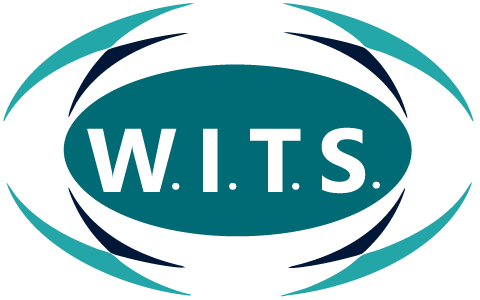
Address Legal Concerns in Health and Fitness Facilities by Implementing a Risk Management Plan
Address Legal Concerns in Health and Fitness Facilities by Implementing a Risk Management Plan
by David L. Herbert, former Editor of the Exercise Standards and Malpractice Reporter and co-author of Legal Aspects of Preventive, Rehabilitative and Recreational Exercise Programs.
A variety of legal concerns impact all health and fitness facilities in the United States. Regardless of the situs of any such facility in any state, these concerns deal with the capital assets of any health and fitness operation as well as the equipment and personnel provided to the users of such facilities. Facilities, equipment and services provided depend not only upon the reasonable safety of such offerings but the expected standard of care developed by the industry for the delivery of relatively safe equipment and services within these facilities. Industry standards of care serve as the foundation for the adoption and utilization of an effective risk management plan to eliminate, reduce and offset relevant risks to clients and the concomitant legal risks to facilities.
Risk management is an initial and ongoing process to assess facility capital assets and operations and through that assessment, to eliminate or at least reduce the risk to consumers utilizing such facilities. In addition, the plan is to offset those related liability risks to the facility which cannot be eliminated or reduced through risk transference processes such as the purchase of liability insurance and/or the use of prospectively signed releases or waivers of liability or at least through the use of acknowledgment of risk documents.
The implementation of risk management strategies to eliminate, reduce or transfer risks to consumers and the related liability risks to facilities, can be addressed through the application of industry standards as well as the law in effect in the jurisdiction within which services are provided. Since the law varies from state to state, the recipe for the adoption and implementation of a risk management plan for any particular facility will need to be fine-tuned in accordance with the applicable jurisdictional law. As a consequence, the services of a risk management professional who is knowledgeable about the establishment and operation of health and fitness activities is necessary along with a risk manager who is also knowledgeable about applicable legal requirements.
The elements of any fitness facility risk management plan include the following: 1) the safe design, layout and development of any health and fitness facility; 2) the selection, assembly, installation and placement of exercise equipment within a health and fitness facility; 3) the maintenance of the health and fitness facility and the equipment located therein; 4) the qualifications of personnel providing applicable services within such a facility; 5) the establishment and rehearsal of any emergency response plan to be utilized in the event of need within any such facility, and 6) the ongoing evaluation and modification of any risk management plan as necessary through management decision.
Individual aspects of any risk management plan, such as emergency response, must be rehearsed to determine the plans effectiveness and to modify that plan as required based upon the rehearsal evaluation. One of the most neglected but essential aspects of any emergency response plan is the requirement that it be practiced, rehearsed, and modified as necessary to be effective. For example, if a health and fitness facility’s physical layout prevents timely contact by a qualified staff member to a facility user in need of, for example, cardiopulmonary resuscitation (CPR) so as to enable a prompt response within a few minutes, adjustments as to the location of exercise equipment and facility classes or instruction might need to be relocated to be closer to emergency response personnel. The location and installation of AEDs, by way of a second example, may also need to be fine tuned to make AEDs closer to the area within which the need for emergency response may be necessary so that AEDs are readily available to apply to facility users in particular areas of the facility. Written portions of any risk management plan related to all the essential operational elements of a health and fitness facility need to be written and published based upon a number of standards available from organizations such as the American College of Sports Medicine (ACSM), the International Health, Racquet and Sportsclub Association (IHRSA) the Aerobics and Fitness Association of America (AFAA), the National Strength and Conditioning Association (NSCA), W.I.T.S. and other similar institutions. The education, training and certification of fitness professionals has been defined by many industry groups and while no universal standard presently exists to establish what is required for industry personnel and while no state presently licenses any such professionals, certification of professionals by accredited institutions seems to be necessary to meet the expected delivery of service within such facilities. Continued educational requirements for such personnel must also be established to meet the required standard of care in this regard.
The transfer of risk is also part of any such risk management plan for health and fitness facilities. Risk transference requires not only the adoption of risk management documents designed in accordance with particular state law so as to reduce the possibility of client litigation but also the establishment of protection for a facility by way of liability insurance which will cover the services provided by any particular facility. Care should be exercised to ensure that such liability insurance covers all aspects of health and fitness facility operations so that all services are covered such as personal fitness training, nutritional counseling, weight control, therapy, etc. Some health and fitness facilities secure liability insurance which may well exclude some of these services from applicable coverage. If any such insurance does not comport to the services as provided by a facility to its clients, the insurance may not cover those activities. As a consequences it is necessary that facilities ensure their services are provided in accordance with a plan which provides insurance in the event of some untoward event arising out of particular activity.
The revision and modification of any health and fitness facility risk management plan is an initial and ongoing process of evaluation and modification as required. Anything less may well expose facilities and their clients to unnecessary risks, which for clients, can include the risk of injury and even death while also exposing the health and fitness facility to potential liability arising out of such activities.
